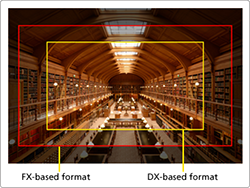
How do I get rid of aliasing and moiré artifacts in video on the Nikon D800/D800E?

All DSLR cameras suffer from moire with video recording, because the sensor image is downsampled(1) to video resolution. This is one of the weak links in using a DSLR to make professional grade movies. There is no option in the Nikon D800/D800E to get a 1:1 sensor pixel to video pixel crop to prevent downsampling like the D4 has.
Removing aliasing and moiré artifacts in post-production is virtually impossible in video, although some software claims to be able to. The only solution that I know of is that Mosaic Engineering sells a $385 optical anti-alias filter for Canon DSLR cameras and is working on a D800/D800E version. Their examples look promising, but I haven't seen it in practice.
If you encounter a situation where moiré becomes apparent, change the way the image falls on the sensor or change the downsampling. The latter is done by choosing a different crop setting or a different video resolution. The former is done by slightly changing focus, zoom, aperture or moving the camera a bit.
Differences between the D800 and D800E
When recording video, there is no difference in moiré between the Nikon D800 and D800E, because the video moiré is caused by downsampling and not by the (lack of an) anti-alias filter.
There is this persistent rumor on internet forums that 'Nikon says the D800E is not for video'. So far, I have not seen any proof of an official statement by Nikon implying this. On the contrary: on Nikon's official D800/D800E product page, and specifically the part about video specs, the D800 and D800E are mentioned both every single time as if they were identical. Nikon's tech guru Steve Heiner, senior technical manager at Nikon USA, also states that they are identical for video use when it comes to moiré(2).
I do understand the background of this idea though. DSLR video in general and the D800E in stills mode are both rather prone to moiré on their own. This might lead to the false assumption that using video and the D800E together must be the recipe for a moiré nightmare. It isn't.
In all the sample footage shot with the D800E and D800 that I've seen online there was no difference when it comes to moiré. As far as I know, the downsampling for video cancels out the sensor moiré, making the D800 and D800E score equally well (or bad, depending how you look at it). Both have equal moiré issues because of the downsampling/line skipping that takes places because the sensor resolution is so much larger than full HD video.
This is how I see it and I can give you no guarantees. I have not tested the D800 and D800E side by side with video myself and rely on the information of Nikon and other testers. If I can get my hands on a D800E I will surely test this. Please note that a comparison test is not easy. Moving the camera or the focus point by a fraction will change the moiré by a lot. A side by side shoot is not enough; the cameras will have to take turns to be in the exact same spot with the lens focused at exactly the same distance.
- The Nikon D800/D800E actually doesn't downsample the entire sensor image. In fact, only certain lines of the sensor are used, the others skipped; the technique is called line skipping. This technique makes video on the Nikon D800/D800E lose about 2 stops in noise quality compared to photos. That's why the video noise at very high sensitivity (over ISO6400) is much worse with the D800/D800E than with the Canon 5D Mark III. On the other hand, the Canon 5D Mark III uses a smaller resolution for downsampling, resulting is less detail even at the lower ISO settings. The D800's downsampling more in depth: First, the 7360x4912px sensor is crop to a 6720x3780px region. Second, every second and third line of pixels are dropped. Third, the result is demosaiced into a 2240x1260px image. Fourth, it is downsampled to the final 1920 x 1080 px resolution. Source: http://falklumo.blogspot.nl/2012/04/lumolabs-nikon-d800-video-function.html
- From 04:14 onwards at http://youtu.be/LOstnXTcmVU
Related questions:
- How can I do about the rolling shutter effect on the Nikon D800/D800E?
- How do I get rid of flicker or banding in movies recorded with the Nikon D800/D800E?
Or go to the index of all Nikon D800 video questions.

